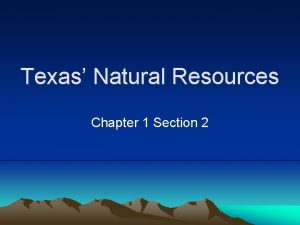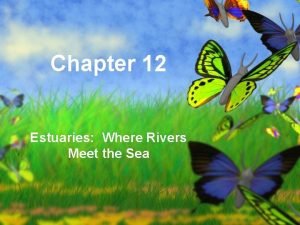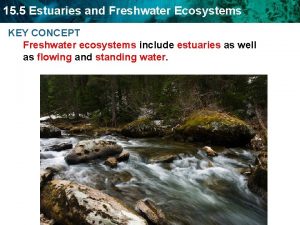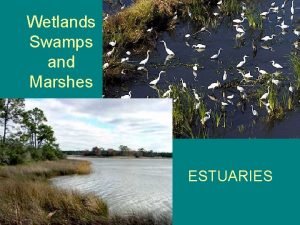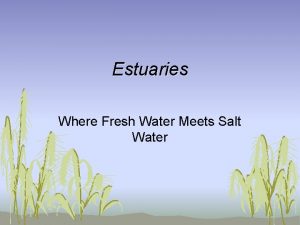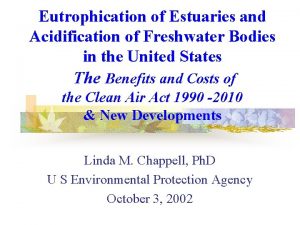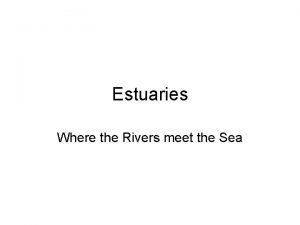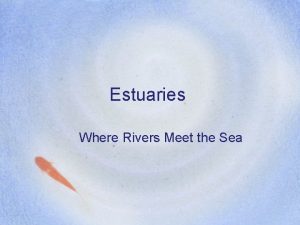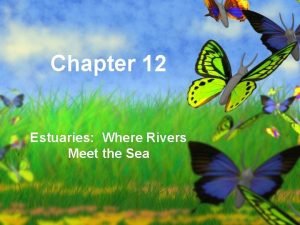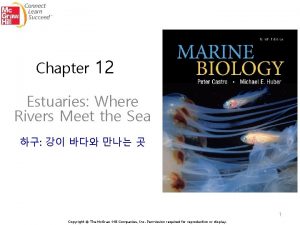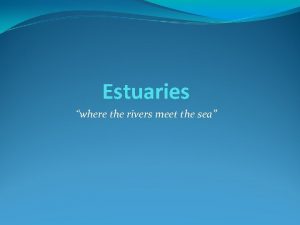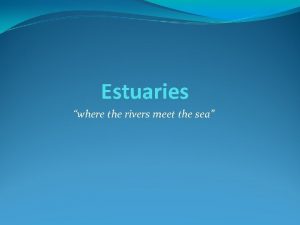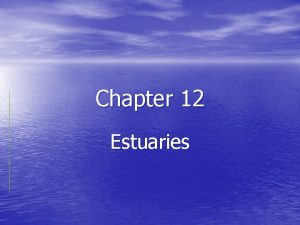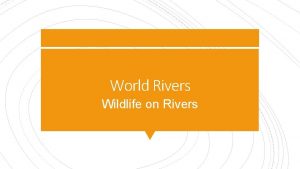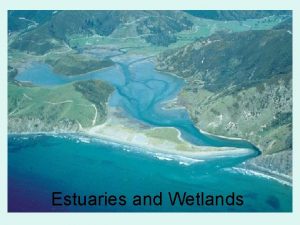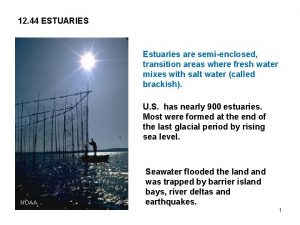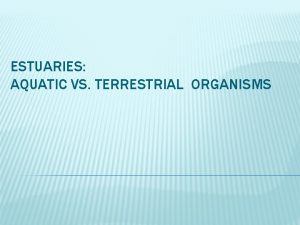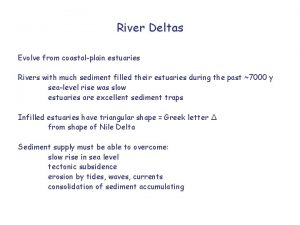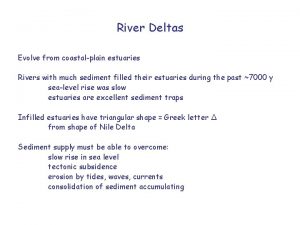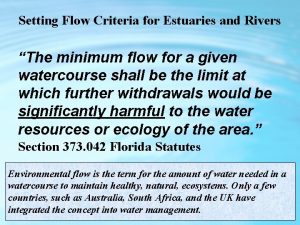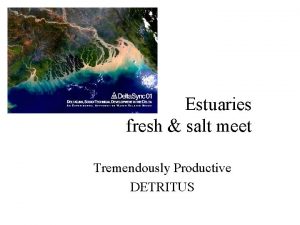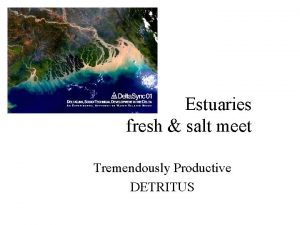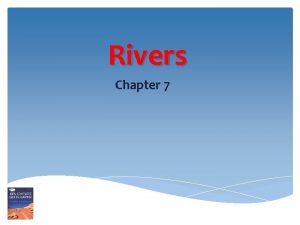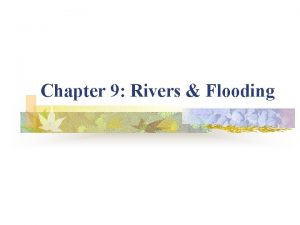Chapter 12 Estuaries Where Rivers Meet the Sea
























- Slides: 24

Chapter 12 Estuaries: Where Rivers Meet the Sea



Estuary • Semi-enclosed areas where fresh water and seawater meet and mix • Close interaction between land sea • Among the most productive environments on earth • Among the environments most effected by humans • Many cites are located along them (NY, London, Tokyo)

Importance of Estuaries • Nurseries of the sea – used by many species for nesting and breeding • Most of the fish and shellfish we eat complete part of their lifecycle here (salmon, herring, oyster) • Used for recreation, jobs, and homes • Of the 32 largest cities 22 are located on estuaries

• Filter out sediments and pollutants from rivers and streams before they flow into the ocean providing cleaner water for humans and marine life

• Estuaries are interconnected with the world ocean and with major systems and cycles on Earth. • Estuaries are dynamic ecosystems with tremendous variability within and between them in physical, chemical, and biological components. • Estuaries support an abundance of life, and a diversity of habitat types.

Estuaries – One of the most Threatened ecosystems on earth • • • Coastal development Introduction of invasive species Overfishing Dams Global climate change (sea level rise)

Living in an Estuary

Organisms of the estuary • Most estuarine organisms are marine species that have developed the ability to tolerate low salinities • Euryhaline – organisms that can tolerate a wide range of salinities – most estuarine organisms are • Stenohaline – tolerate a narrow range in salinity

Dealing with Osmosis • Osmoconformers – body fluids change with the salinity • Osmoregulators – keep the salt concentration of their body fluids more or less constant

Types of Estuarine Communities

• Consist of few species • Species present are in large numbers

Open Water – when tide is in • Water is murky – turbid • Lots of food – plankton • Fish move in

Mudflats – at low tide • Organisms – infauna • Problems – predation, desiccation, temperature changes, salinity changes



Salt Marshes • Dominated by grasses • Temperate and subarctic regions





Mangrove Forests • Tropical equivalents of salt marshes • Dominated by Mangroves (trees) • tropical regions

 Why are some rivers in texas called “wrong way” rivers?
Why are some rivers in texas called “wrong way” rivers? Till we meet at jesus feet
Till we meet at jesus feet Questions about estuaries
Questions about estuaries Producers in estuaries
Producers in estuaries 5 importance of estuaries
5 importance of estuaries Standing freshwater ecosystem
Standing freshwater ecosystem Why estuaries are important
Why estuaries are important Why estuaries are important
Why estuaries are important On not shoplifting louise analysis
On not shoplifting louise analysis Estuaries
Estuaries Types of estuaries
Types of estuaries Estuaries and coasts
Estuaries and coasts Troy aegean sea
Troy aegean sea Yellow sea and east china sea
Yellow sea and east china sea Jellyfish and sea anemone
Jellyfish and sea anemone Marlin symbolism
Marlin symbolism Sea stump
Sea stump The great gatsby how does myrtle react to tom's arrival
The great gatsby how does myrtle react to tom's arrival Bud not buddy ch 11
Bud not buddy ch 11 3 market need
3 market need Transcontinent
Transcontinent Hình ảnh bộ gõ cơ thể búng tay
Hình ảnh bộ gõ cơ thể búng tay Bổ thể
Bổ thể Tỉ lệ cơ thể trẻ em
Tỉ lệ cơ thể trẻ em
